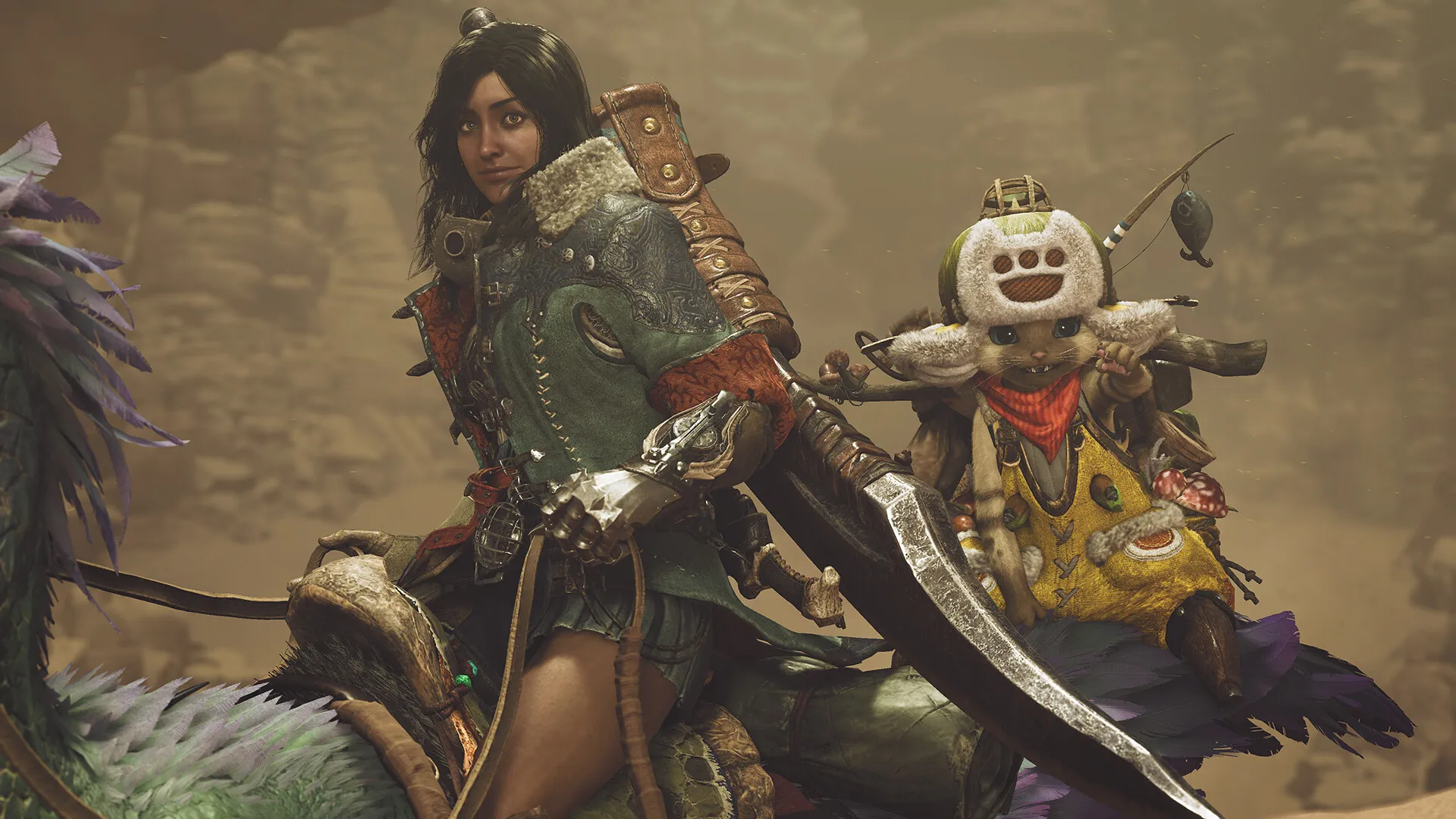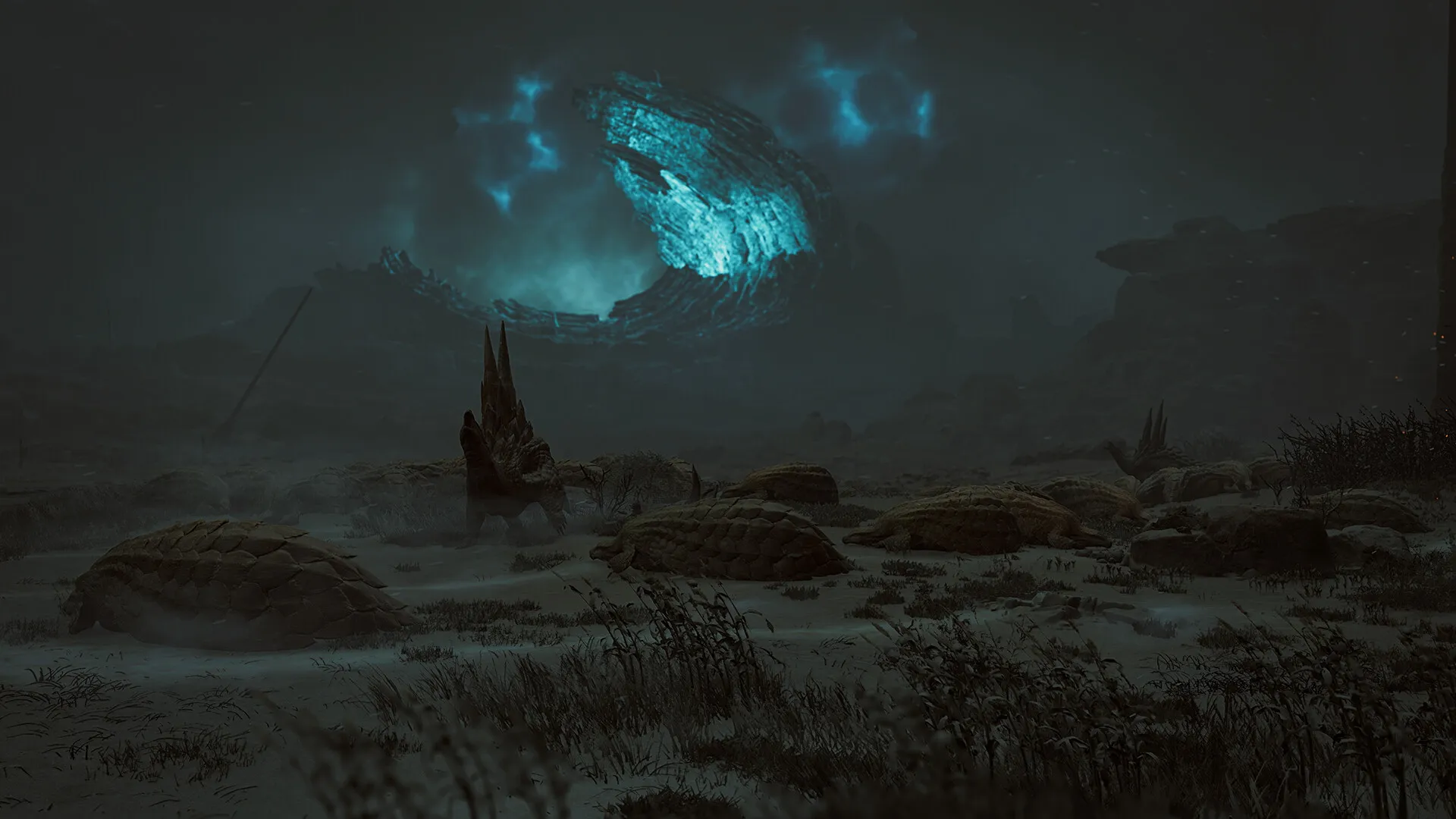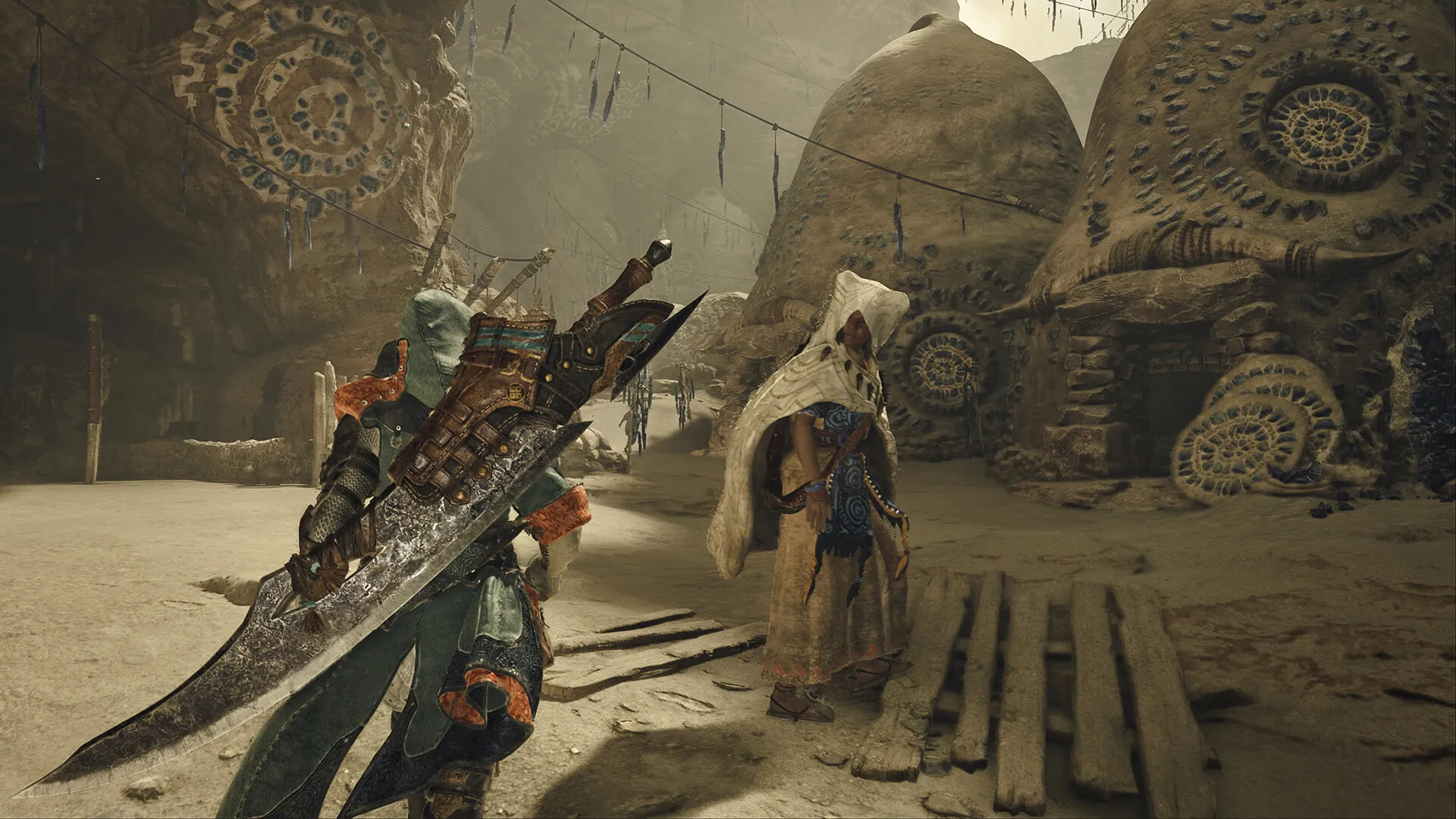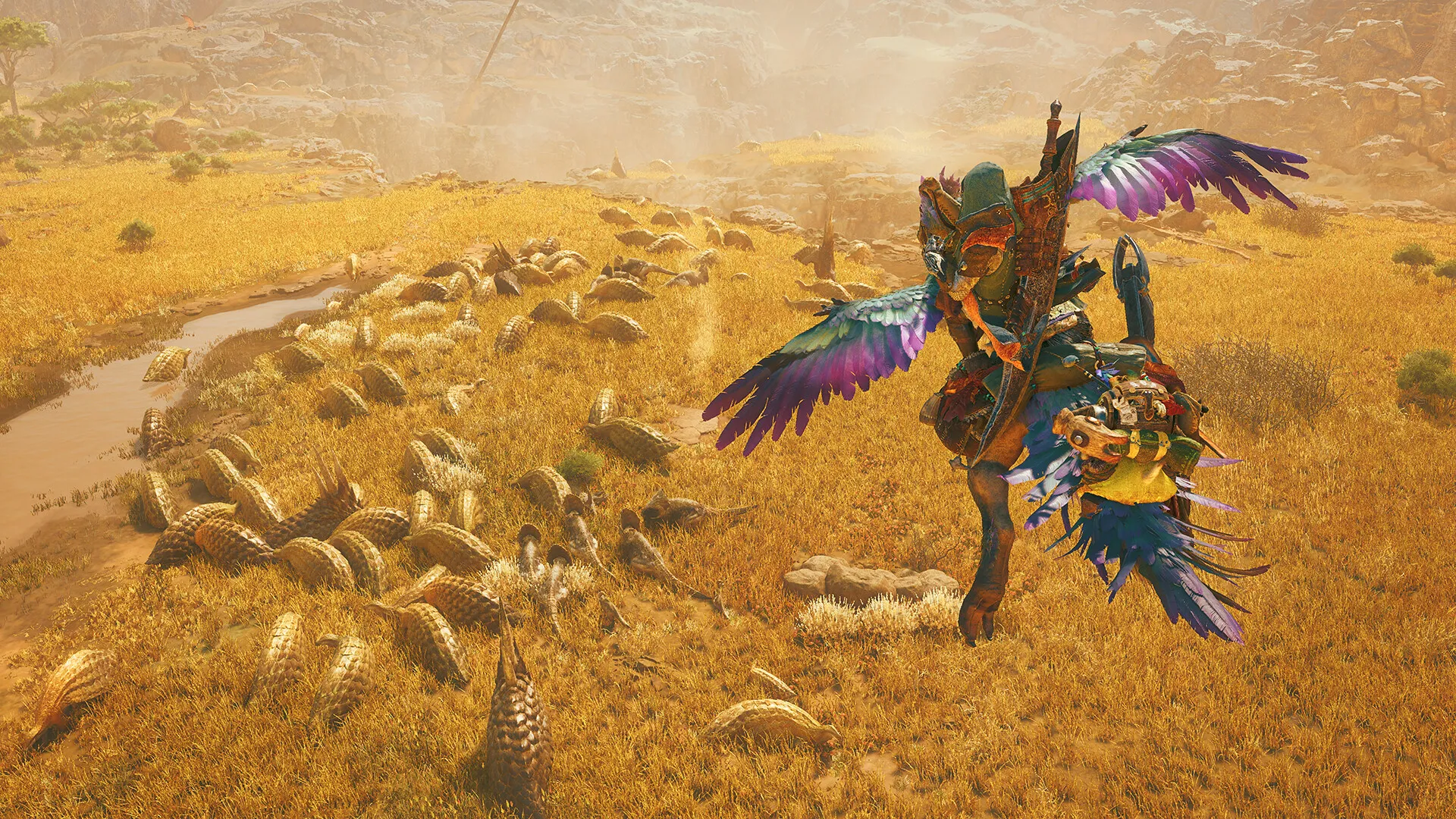Monster Hunter Wilds refines its combat system with notable changes to familiar weapons. The Great Sword, Lance, and Hunting Horn now have adjustments that make them feel more responsive without sacrificing their distinctive playstyles.
The Power Clash mechanic is an important addition, especially for weapons that can guard, like the Great Sword. By timing the block perfectly, players initiate a quick counterattack, creating satisfying moments that blend defense and offense. This mechanic is more intuitive compared to earlier entries, building on Monster Hunter World’s guard mechanics but adding a more tactile sense of timing.
Focus Mode allows players to manually target specific monster parts, which opens up new tactical possibilities. This system integrates with the Wound mechanic, encouraging players to aim for weak spots and break monster parts to deal more damage.
Focus Strikes, which target these wounds, amplify the damage dealt, rewarding precision and tactical thinking. This adds a layer of depth to combat that draws players into understanding each monster’s anatomy while keeping the experience fluid and accessible.
Exploration and World Design
Monster Hunter Wilds introduces five unique biomes, each distinct in its terrain and atmosphere. The seamless transitions between these areas enhance exploration, allowing players to traverse from one biome to another without disruption.
This design gives a sense of fluidity that feels much more natural than earlier Monster Hunter games, where players would return to a central hub after each hunt. For example, the shift from the open, sun-baked expanses of the Windward Plains to the more intricate and densely packed Scarlet Forest creates a palpable change in both aesthetics and gameplay.
Players are no longer forced to transition between separate areas via loading screens, instead experiencing a unified world that helps immerse them further into the game’s environment. This change directly impacts questing by offering players greater freedom to move through areas, gather resources, and encounter various monsters without waiting for loading times between zones.
The dynamic weather in Wilds introduces both visual variation and strategic depth. Each biome undergoes shifting weather patterns, like the violent sandstorms of the Windward Plains or the heavy downpours in the Scarlet Forest.
These conditions not only alter the landscape but also impact monster behavior. For example, storms can cause certain monsters to become more aggressive, altering how players must approach these encounters. While these changes add a layer of excitement and unpredictability, they are occasionally hindered by technical issues.
The visual fidelity suffers during certain weather patterns, with the Fallow period’s muted lighting and flat colors standing in stark contrast to the vibrant aesthetics of the other conditions. Despite these occasional drawbacks, the integration of weather into the gameplay provides an engaging layer of strategy, influencing both exploration and monster encounters.
Story and Characters
Monster Hunter Wilds presents a straightforward story that takes the player on an expedition to the Forbidden Lands, a dangerous area that holds a variety of menacing creatures. The central objective revolves around hunting a monstrous threat called the White Wrath, whose actions disrupt the region’s delicate ecosystem.
While the monster-hunting premise is familiar, there’s an attempt to add more weight to the narrative through character-driven moments. However, the plot itself feels predictable, following a tried-and-true structure seen in other Monster Hunter games: a series of hunts leading up to the resolution of the larger mystery.
Despite this, the game does attempt to weave in more personal stakes, but the story ultimately remains grounded in its monster-hunting roots without offering many unexpected turns.
Character development in Wilds focuses on key figures like Alma, the compassionate handler, and Nata, a young boy whose village is threatened by the White Wrath.
Alma’s backstory provides some context for her role, offering a glimpse into her motivations and her connections with the protagonist. Nata’s growth from a frightened boy to someone who finds his place within the harsh world is another subtle arc that adds emotional depth. Still, the game keeps these character moments secondary to the larger quest.
While these arcs are welcome and add some engagement, they don’t overshadow the main focus of the game: the hunting and monster battles. The relationships between the protagonist and the supporting cast are enjoyable, but they don’t evolve in a way that would push the boundaries of traditional character development in the genre.
Difficulty and Accessibility
Monster Hunter Wilds shifts the balance of difficulty, offering a more accessible experience compared to previous entries like Monster Hunter: World. Combat is fluid and intuitive, allowing players to focus more on executing flashy moves rather than worrying about complicated strategies.
However, this simplification comes at a cost: the game lacks the challenging moments that veteran players expect from the series. Unlike World, where monsters could be overwhelming and required detailed preparations, most of the monsters in Wilds are easily defeated without much thought.
This makes the game more welcoming to new players, but the lack of a real challenge can be disappointing for those accustomed to the complex, high-stakes fights of earlier titles. While post-game content introduces some tougher monsters, it doesn’t fully make up for the overall reduction in difficulty, leaving seasoned hunters wanting more.
The progression system in Wilds is streamlined, making it quicker to level up and acquire new gear. Crafting and upgrading weapons feel more accessible than in previous games, where hunting specific monsters and carefully choosing gear was essential for success.
In Wilds, gear customization is less about strategic preparation and more about fast upgrades. As a result, players don’t need to focus on countering specific monster attributes or weaknesses.
The simplicity of this system makes it easier to jump in, but it also removes the deeper layers of progression that have traditionally been a key part of the series. Without the need for careful planning or crafting, the game’s endgame progression feels less rewarding, offering fewer moments of satisfaction for players who enjoy the grind of gear optimization.
Technical Performance
Monster Hunter Wilds uses the RE Engine to deliver some of the best monster models in the series. The detailed designs of creatures, with their intricate movements and impressive textures, make each battle a visually thrilling experience.
Unfortunately, this level of detail isn’t consistent across the entire game. While monsters look spectacular, certain areas of the world suffer from low-resolution textures, making parts of the environment feel unfinished.
The Fallow period in particular is visually underwhelming, with dull colors that make the world feel flat and lifeless. While the monster models shine, the world itself doesn’t always match up to that level of visual fidelity, which can be jarring during exploration.
Performance across different platforms varies significantly. On the Xbox Series X, the game runs decently in its “Balanced” mode, though there are noticeable frame rate drops during intense weather events or large monster battles. On PC, the game demands powerful hardware to run at its best.
Even high-end systems like those with an RTX 3090 still experience occasional frame rate issues, especially during complex environmental shifts. These performance hiccups can disrupt the experience, particularly for players expecting the smooth, seamless performance the RE Engine can provide on other titles.
Multiplayer and Social Features
Monster Hunter Wilds offers an enhanced multiplayer experience, streamlining party invites, SOS flares, and cross-play support. Players can invite friends into their party for specific quests, while SOS flares allow others to join in on a hunt, whether they’re part of the same party or random players.
The cross-play functionality extends the multiplayer reach, making it easier for players across different platforms to team up.
For those preferring solo play, the “Online Single-Player” feature lets players summon help via SOS flares while maintaining full control of the pace. Additionally, NPC companions—Support Hunters—can step in to fill any empty party slots, offering meaningful assistance during hunts.
These companions are surprisingly capable, making it possible to continue progressing with minimal disruption to the hunt. This balance between solo and multiplayer elements enhances the flexibility for players, allowing for a tailored experience regardless of preferred playstyle.
Progression System and Post-Game Content
Monster Hunter Wilds makes the main game progression relatively simple, allowing players to reach the credits in around 15 hours.
The ease of progression, with quick gear upgrades and minimal challenge from monsters, contrasts with earlier entries like Monster Hunter: World, where strategic planning and customizing gear were essential for success. Here, much of the challenge is toned down, which could appeal to newcomers but might feel lacking for seasoned players who expect more from the grind.
After finishing the main campaign, the post-game content doesn’t raise the difficulty bar significantly. While there are some tougher monster variants available, they don’t demand a shift in strategy or require extensive gear adjustments.
The absence of major challenges during these hunts makes the endgame feel less satisfying. For comparison, Monster Hunter: World and Rise offered content that challenged players to adapt, encouraging deeper exploration of the game’s systems.
With future content updates, there’s potential for Wilds to offer more depth. Expansions like Iceborne and Sunbreak significantly improved difficulty and progression in past titles, so players hope similar updates will enrich the post-game experience here.
Until then, the progression system in Wilds feels limited, lacking the complexity and challenge that have been hallmarks of the franchise in the past.
The Review
Monster Hunter Wilds
Monster Hunter Wilds successfully streamlines the Monster Hunter experience, making it more approachable for newcomers with a reduced difficulty and simplified progression. However, this accessibility comes at the expense of challenge, leaving veterans craving more depth in combat and post-game content. While the visual design of monsters is impressive, the world lacks the polish and consistency expected from the RE Engine. Future content updates could add depth, but as it stands, Wilds feels like a less rewarding entry for long-time fans.
PROS
- Streamlined and accessible gameplay for new players
- Stunning monster designs with intricate animations
- Smooth multiplayer integration with cross-play and SOS flares
CONS
- Reduced difficulty and lack of challenge for veteran players
- Inconsistent world textures and occasional graphical hiccups
- Simplified progression and gear customization





















































